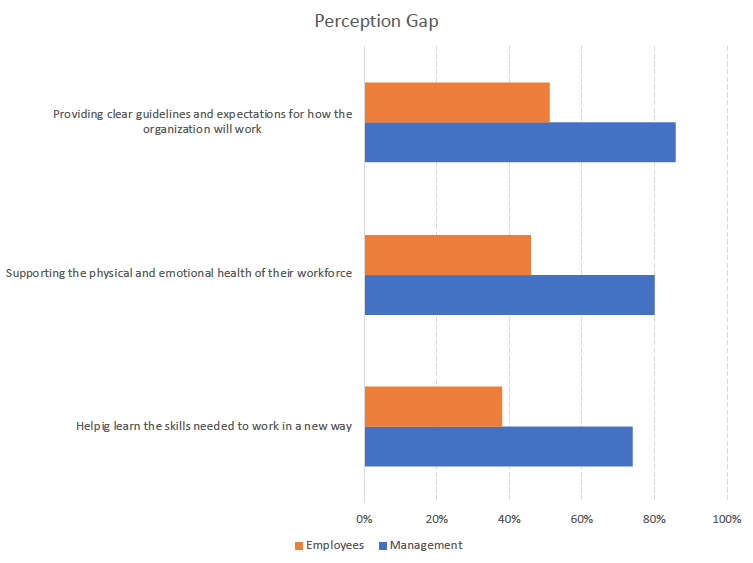Boeing’s 737 Max issues highlighted the company’s sacrifice of safety for financial performance, resulting in a tarnished reputation. The prioritization of profit over core values also damaged the FAA’s credibility and revealed a lack of accountability for top executives. This downfall serves as a reminder of the importance of maintaining core values and prioritizing them over short-term financial gains.

2021 Ahead! Are you ready?
Thank god, but 2020 is nearly over. While it has been a crazy year, it has, in many ways, flown by. It seems only yesterday that we were all locked down and adjusting to a new world. However, the year is nearly over, and the world has not changed. However, we are experiencing a “K” shaped recovery. Effectively, the economy is bifurcating, and many industries and companies will end up on the downward slope.
As I have said before, I expect COVID to be with us until Q3/Q4 2021, but call me a pessimist. Even so, we should expect to be here till the end of Q2 2021. So how are you planning for 2021? What got you here won’t get you there!
This Year It Is the Accelerant Stupid
As you begin the planning cycle, consider that COVID is an accelerant. Whatever were the major trends were in your industry at the end of 2019, take them forward ten years, that is where the industry is now! So where are you and where should you be?
Concerning where you are and where you need to be when COVID is over, you need to take a realistic look at your organization and do a gap analysis on:
- strengths and weaknesses,
- culture and core values,
- human and capital resources,
- processes and systems,
- customers and buying habits,
- product and service delivery,
- suppliers, and
- competition.
With that gap analysis, you can determine where to focus your attention, so that you can emerge from COVID in a leadership position. I am not going to go through all these today, but here are few things to consider.
Culture
Culture has never been more critical. If employees adhere to the company’s core values and live its culture, then provided they know the organizational goals, they can make the right decisions. Moving decision making down to the front lines is critical during the next twelve months as the environment changes quickly. Having the decision process moving up and down the organization is a luxury few can afford.
For a great reminder, look at Turn the Ship Around by Capt. below.
Further, reading “Adaptation under Fire: How Militaries Change in Wartime,” by Lt. General David Barno and Nora Bensahel, there are several crucial lessons for management.
- Everyone Knew the Mission, not just the task. Post World War I, decentralized, independent battlefield actions, a tradition in German military thinking, returned and became a central tenet of German army doctrine. Mission orders were regularly emphasized and practiced during peacetime training exercises.
- Continuous Improvement. The German army established the culture of relentlessly critiquing its leaders and units’ performance in exercises and war games. Commanders and staff officers at all levels were expected to do so candidly and objectively, without regard to personal embarrassment or potential career damage. This candor extended to critiquing the performance of senior officers and higher headquarters as well. These principles made German doctrine inherently adaptable in the face of battle.
- Changing the rules of the Game. The French army believed the next war would be the same as WWI. French interwar thinking focused primarily on leveraging defensive operations to prevail in any future conflict. Thus, they undertook no “no large-scale examination of the lessons of the last war by a significant portion of the Officers Corps.” In contrast, the Germans examined how to use new technologies to change the “Rules of the Game” and win using offensive operations. They improved their Blitzkrieg tactics that had great success in World War II.
I would bring these lessons into your organization as part of any new model to succeed. Regarding business Blitzkrieg offensives, I would look to John Boyd and his OODA Loop as a better model.
Process and Systems
As you examine your processes and systems, I would recommend asking, “If we didn’t do it this way, would we?” and “Will these systems get us to where we need to be?” In many cases, with the acceleration that has been experienced, the answer may be no. Thus, put together multifunctional teams together to examine these and use different problem-solving models, as I mentioned in “Want the Best Results, Get out of your Comfort Zone.” Some I would look to are:
- Get out of your comfort zone. Change the environment or put limitations on the team. Use Brian Eno’s Oblique Strategies, where each card puts a constraint on the team to help too when teams are struggling to break through a problem. They are available on Amazon.
- Break your business process down to its most simplified version, e.g., ship a product to a customer and then work on new solutions. The more you define the process in the question, the more you are tied to that system in the solution. By being most simple, you can expand the range of solutions.
- New ideas, enforce the rule that you cannot challenge any idea until 100 are developed. This rule stops the thought process from being shut down early by those that oppose change, and often the craziest ideas come at the end, but a gem of something great.
- Also, in examining systems, take a look at Tom Wujec’s TED Talk, “Got a Wicked Problem, First Tell Me How You Make Toast,” below.
Using these problem-solving methods, if done correctly, could provide an additional benefit, reinforcing your culture and camaraderie among your employees, which has been challenging to do during our COVID work from home.
Contact me if you need help facilitating any of these processes as you look ahead as I wish you all the best succeeding in 2022 and beyond.
Copyright (c) 2020, Marc A. Borrelli
Recent Posts
The Downfall of Boeing: A Lesson in Core Values
Resolutions, Here We Go Again.
In reflecting on 2021 resolutions, the author scored themselves in three categories and sought to improve success in 2022 by addressing friction points. Drawing on advice from social psychologist Wendy Wood, the author identified areas to reduce or increase friction in their failed resolutions. By making these adjustments, the author aims to enhance their goal achievement and encourages others to consider friction when setting resolutions.
You need to take an extended vacation. No, seriously, you do.
COVID has taken a toll on all of us. If you have not taken an extended vacation in a while where you disconnect, you need to now. You and your business will benefit.
Becoming Famous in Your Niche: The Success Story of Linn Products Limited
In a previous discussion, I highlighted the importance of being famous for something. Being well-known in your niche can help you: Concentrate on your strengths Connect with your target audience Communicate your offerings more effectively Receive referrals Identify...
Understanding and Optimizing Your Cash Conversion Cycle
Understanding and optimizing the Cash Conversion Cycle is crucial for business growth, as it impacts cash flow and the ability to access external capital. This cycle consists of four components: Sales, Make/Production & Inventory, Delivery, and Billing and Payments. To improve the Cash Conversion Cycle, companies can eliminate mistakes, shorten cycle times, and revamp their business models.
Discovering Your Niche: Why You Need to Be Famous for Something
As an entrepreneur, it’s crucial to specialize in a specific area and become famous for something, allowing you to generate referrals and build your brand. Understanding the “job” you’re hired for helps you stand out in the marketplace and communicate your value proposition effectively. By providing value to your clients, you can adopt a value-based pricing approach, ensuring your business remains competitive and maintains a strong market presence.
Rethinking Your Pricing Model: Maximizing Margins and Providing Value
Rethink your pricing model by focusing on the value you provide and your customers’ Best Alternative To a Negotiated Agreement (BATNA). This approach can help you maximize margins while delivering better value to your clients. Assess your offerings and brainstorm with your team to identify pricing adjustment opportunities or eliminate commodity products or services.
Do you know your Profit per X to drive dramatic growth?
I recently facilitated a workshop with several CEOs where we worked on the dramatic business growth model components. One of the questions that I had asked them beforehand was, "What is Your Profit/X?" The results showed that there this concept is not clear to many....
The War for Talent: 5 Ways to Attract the Best Employees
In today’s War for Talent, attracting the best employees requires a focus on value creation, core customer, brand promise, and value delivery. Clearly articulate your company’s mission, identify your “core employee” based on shared values, and offer more than just a salary to stand out as an employer. Utilize employee satisfaction metrics and showcase your company’s commitment to its workforce on your website to make a strong impression on potential candidates.
Are you killing your firm’s WFH productivity?
Productivity remained during WFH with COVID. However, further analysis found that hourly productivity fell and was compensated for by employees working more hours. What was the culprit – Meetings. Want to increase productivity, have fewer meetings.















